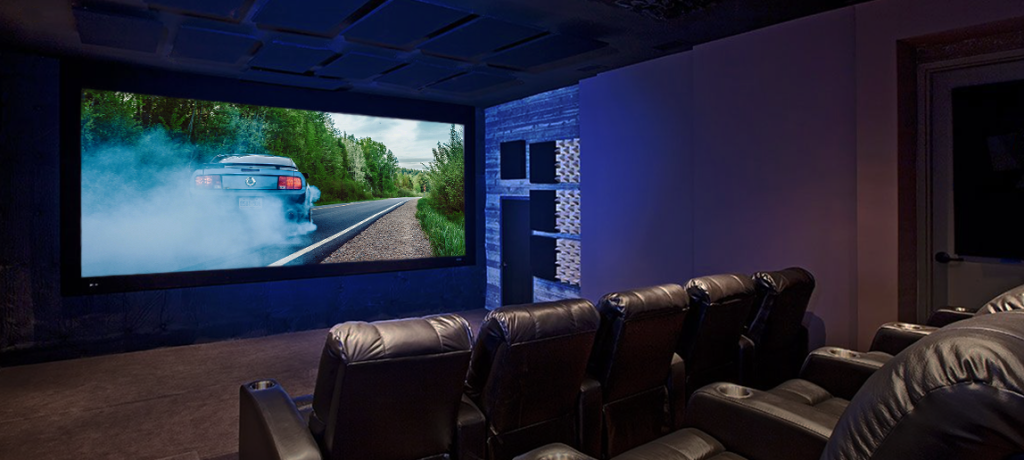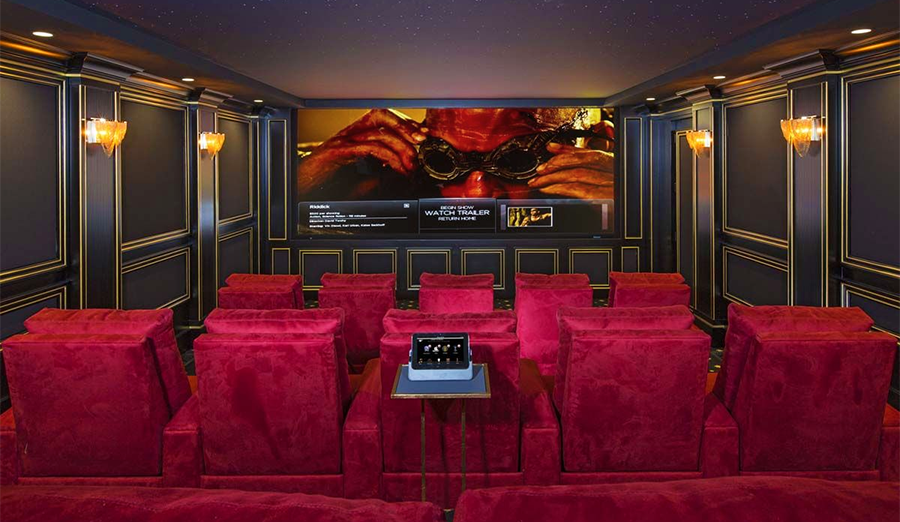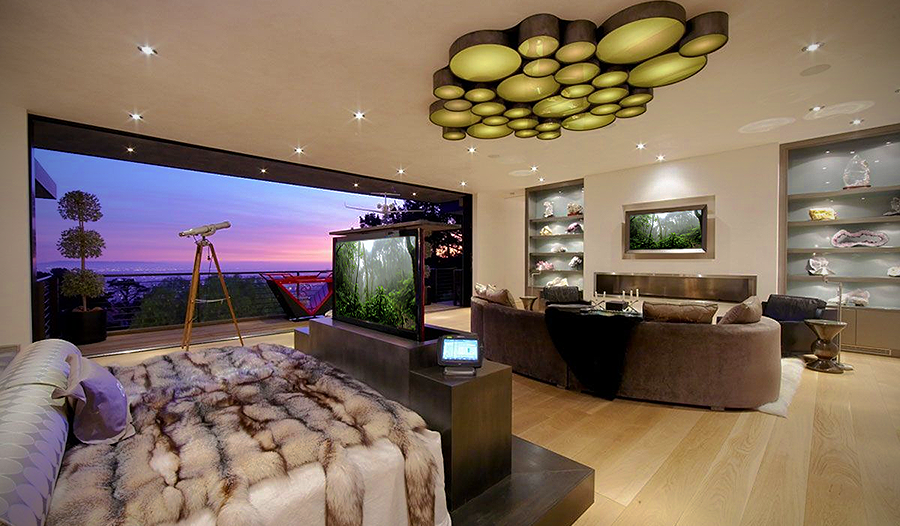
Eric Thies: Bringing the Movies Home for Hollywood
“The bar for home cinemas is pretty high in Southern California. People are spending enormous amounts of money on making them great.”
The head of LA-based DSI Luxury Technology pulls no punches offering up his thoughts on private cinemas, outdoor theaters, and mega billionaires who expect the impossible
by D. Craig MacCormack
June 16, 2022
Most high-end integrators do private cinemas, but only a handful specialize in private cinemas for people who are actually in the movie industry. Eric Thies is one of them—and possibly the preeminent one—creating premium home entertainment spaces for directors, producers, actors—all kinds of spaces for all kinds of talent both above and below the line. But the efforts of his LA-based DSI Luxury Technology extend well beyond the film community, and well beyond rooms in the service of movie-watching, creating flexible and responsive smart homes as well.
We recently talked to Eric about the diversity of his company’s capabilities and specifically about the challenges and opportunities of servicing the market in and around LA.
What is unique about how you approach doing a home theater, compared to integrators who work elsewhere in the country?
Since we’re in Southern California, the first question we ask clients is, “Are you in the entertainment industry?” That can change the direction of where we take the theater.
If they are in the industry and have access to studio content, then we’re going to be doing a full DCI [Digital Cinema Initiatives] theater, which means we’re going to be installing a professional projector and movie server since they’re going to be able to get the same version of a film that’s released in theaters on a hard drive that’s messengered to the house or perhaps over the air to a streaming device—not an Apple TV, but something more elaborate than that.
Then there are going to be a lot of considerations to make that professional theater work in a residential environment. If they’re in the Bel Air Circuit, we’ve got to get all that equipment in the house some way, which means we need lots more space than we would in a standard theater because a 4K DCI projector is much bigger than a 4K residential
Eric Thies is the founder of DSI Luxury Technology, the most awarded custom installation firm in North America. He is a member of the Home Technology Association and helped develop the HTA certification system. He is also a member of The Guild Integrator’s Alliance—an invitation-only group of 13 of the premier integration firms in the US.

The private cinemas on the Bel Air Circuit allow an exclusive group of people in the film industry to view the same digital version of a movie that’s distributed to commercial theaters
projector. Also, if we want to have Dolby Atmos content in our DCI playback, we have to get Dolby approval. Dolby has to sign off on the speaker placement, the speaker types we’re using—the SPL [sound-pressure level] is super important in that regard.
The other thing to consider is that the bar for home cinemas is pretty high in Southern California. Almost any luxury home we do has a space for one and people are spending enormous amounts of money on them and on making them great.
Given how complex these installations can be, what do you do when you have a client with unrealistic expectations?
We had a very famous billionaire who is very outspoken on Twitter—I can’t say who he is, but he’s trying to save the world by not using fossil fuels. We got a call on a Friday afternoon saying he needed a theater installed by the weekend. And we said, “That’s not how it works, sorry. If that’s what it takes to keep you as a client, we’re going to have to pass because we just can’t produce something we’re happy with in a few hours.”
There are a lot of factors that determine the time it takes to build a theater. One, are we doing a full isolation and acoustics package? Meaning, are we rebuilding the walls to keep sound from going out or from coming in? Are we going to do acoustic treatments on the walls, which needs acoustic design ahead of that and then fabric stretching? Rarely do we go in and just fill a drywall box and put speakers in the wall and a screen up with a projector. Typically, our rooms are constructed or demoed and then rebuilt.
DSI does many types of entertainment spaces beyond private theaters and is also known for its sophisticated whole-house automation

DSI does many types of entertainment spaces beyond private theaters and is also known for its sophisticated whole-house automation
If we’re doing the construction—acoustics and everything—that’s typically a four- to six-month process. If we’re just coming in and putting up a screen and fixing the room acoustically via electronics, that’s probably two or three months before we finish it, depending on our lead time and the supply chain and all those things we’re dealing with right now.
What kind of price range are we talking about for a project of this magnitude and size?
I don’t think we’ve done a theater in a long time that’s any less than $50,000, and our theaters can go up to $2 million. I think our sweet spot, if you’re talking electronics and room buildout, is probably in the $500,000 to $700,000 range.
How do you make sure every project stays on time, on budget, and according to plan?
Theaters are a lot more contained, a lot easier to manage, with a lot less unpredictability than some of the other things we do because it’s usually only one room. There’s plenty to go wrong from a technology standpoint, and there are clients to manage with their grand ideas and changing their minds and all that other stuff, but for the most part, of all the things an integrator does, a theater is complex but predictable.
If you’re not used to doing high-performance theaters or you’re trying to reinvent the wheel every time you do one, that’s going to be painful. But if you’ve got a system in place, it’s a pretty predictable process and outcome. A construction manager I work with has a phrase: Get a client with a blank piece of land and a set of plans. The client is the variable, because they tend to change their mind and want something different or talk to a friend who has a different idea about the room and how they should use it.
Is there anything else you do that’s unique to the Southern California market?
Since we can actually watch movies outside 365 days a year, we do pretty elaborate outdoor living spaces with great audio and also great video. And that’s a trend that’s definitely going up. We’re getting a lot more requests for outdoor theaters.
Those are the most difficult because they want the experience but they don’t want to see anything. They don’t want a permanent screen up in their backyard, so either we’ve got to think of ways for screens to pop out of things or we have to think about bringing in a temporary screen, and how to have speakers, whether that be temporary or permanent. It’s a lot trickier than in home theaters.
Craig MacCormack is a Massachusetts-based writer and editor with more than a decade’s experience covering the AV integration industry. He was the executive editor for Commercial Integrator and has also written about digital finance, architecture and engineering, and local and national news and sports in his 27-year journalism career. You can connect with him on Twitter at @CraigMacCormack, but be warned, there’s a heavy Boston sports component to his tweets.
“Since we can actually watch movies outside 365 days a year, DSI does pretty elaborate outdoor living spaces with great audio and video. That’s a trend that’s definitely going up.”
© 2025 Cineluxe LLC


